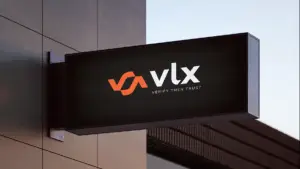Rising Defaults, Dimon’s Warning, and How VLX / CCIA Helps Banks Stay Ahead
After years of abundant liquidity, the U.S. credit cycle is turning. Defaults are rising again; not just among speculative borrowers, but across corporate and consumer credit alike.
Moody’s reports that leveraged-loan defaults have reached 7.6 percent, the highest level since 2020. Credit-card delinquencies are up roughly 50 percent year-over-year, and commercial real estate distress continues to climb as refinancing costs soar. The pattern is familiar: when liquidity tightens, weaknesses surface fast; and contagion follows.
Dimon’s “Cockroach” Warning
JPMorgan Chase CEO Jamie Dimon captured the market’s unease in his Q3 2025 earnings call after the collapse of subprime auto lender Tricolor Holdings and accounting failures at First Brands. JPMorgan took a $170 million loss tied to these events, prompting Dimon to remark:
“My antenna goes up when things like that happen. I probably shouldn’t say this, but when you see one cockroach, there’s probably more. And so everyone should be forewarned on this one.”
— Jamie Dimon, CNN, Oct 16 2025
Dimon was referring to growing fragility in the private credit and non-bank lending sector, where transparency is thin and valuation discipline inconsistent. His metaphor is blunt but accurate: a single default rarely exists in isolation. It signals broader structural stress that most risk dashboards simply miss.
The Blind Spot in Traditional Monitoring
Many financial institutions still rely on quarterly appraisals, borrower-provided reports, and spreadsheets for collateral oversight. That lag creates blind spots. When asset values erode or collateral conditions change, the information often reaches credit officers too late to act.
In volatile markets, static reporting is no longer sufficient. Collateral must be treated as a living data set and must go to the heart of the collateral itself in many cases at the physical asset level. Those assets need to be continuously validated, monitored, and revalued in real time to ensure they’re still functioning, maintained, and in the condition that the lender expects them in.
Enter VLX / CCIA — Continuous Collateral Integrity Analysis
VLX.ai’s Continuous Collateral Integrity Analysis (CCIA) platform was built precisely for this shift. It provides banks, private-credit funds, and asset-based lenders with a real-time view of every pledged asset, transforming collateral from a static entry on a spreadsheet into a continuously verified digital twin.
The result is continuous situational awareness; a system that sees early warning signals before they become headlines. VLX lives by the motto Verify, then Trust ®.
Why It Matters Now
As credit stress builds, regulators and investors alike are demanding better visibility into collateralized exposures. Institutions equipped with real-time monitoring can respond days or weeks earlier, reducing losses, improving recoveries, and demonstrating proactive governance.VLX’s CCIA is already being deployed by lenders who recognize that defaults are lagging indicators. The goal is no longer just to measure risk, it’s to anticipate it.
The Bottom Line
Jamie Dimon’s warning was less about one failed lender than about complacency. Defaults tend to multiply when oversight lags behind reality.
VLX’s Continuous Collateral Integrity Analysis gives financial institutions the foresight to detect stress before it compounds, turning collateral monitoring from a periodic task into a continuous discipline.
Because when you see one default, there’s probably more; and visibility is the only real defense.





